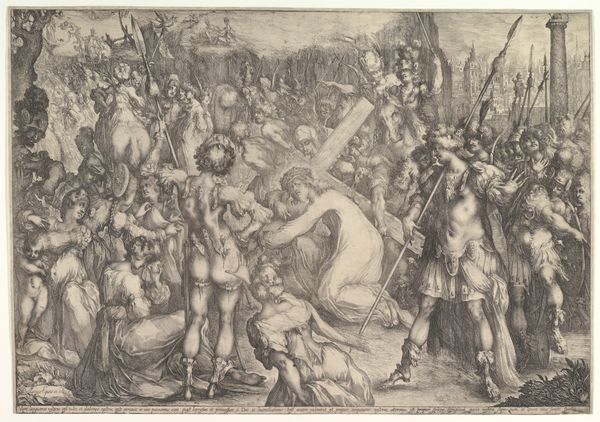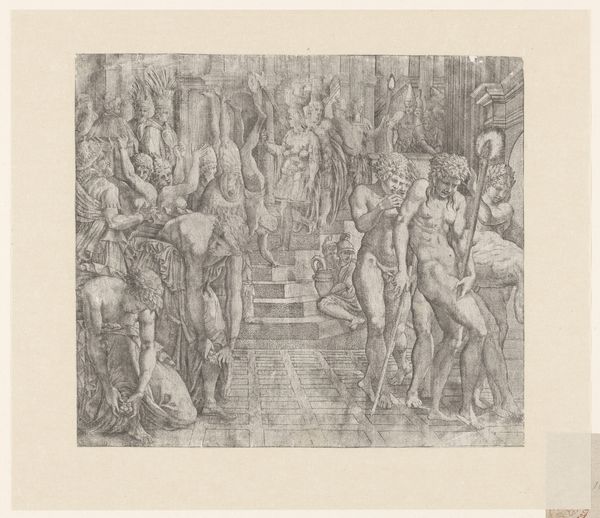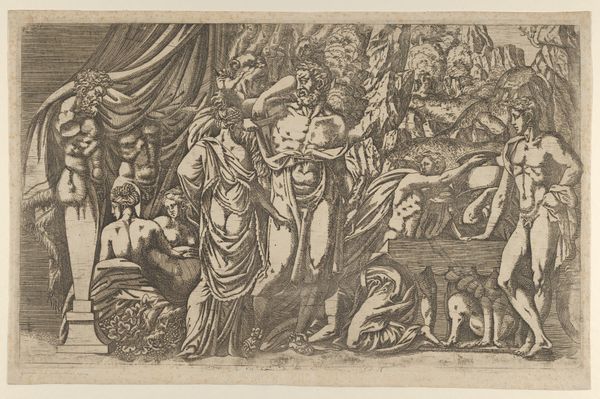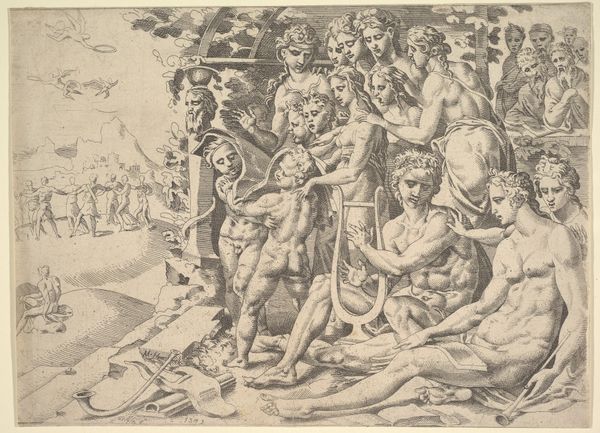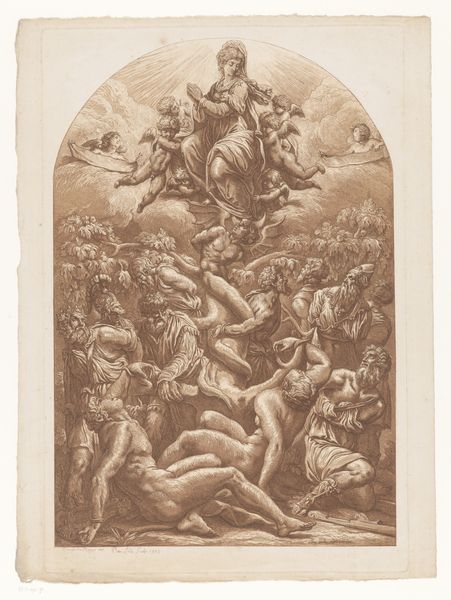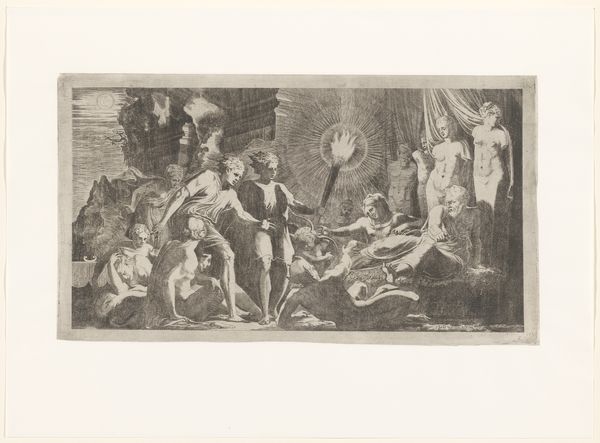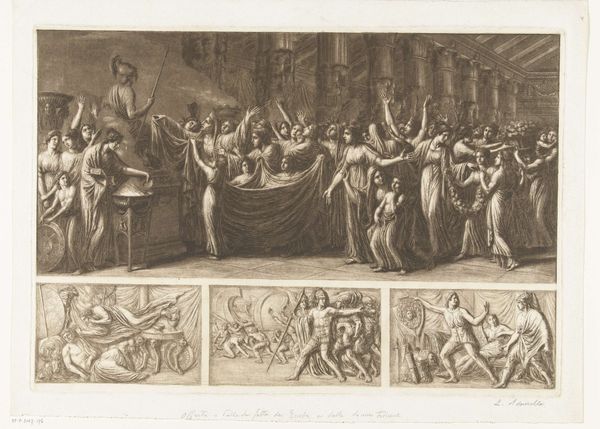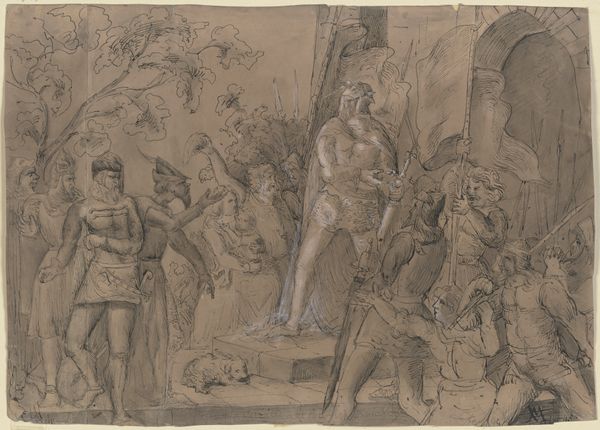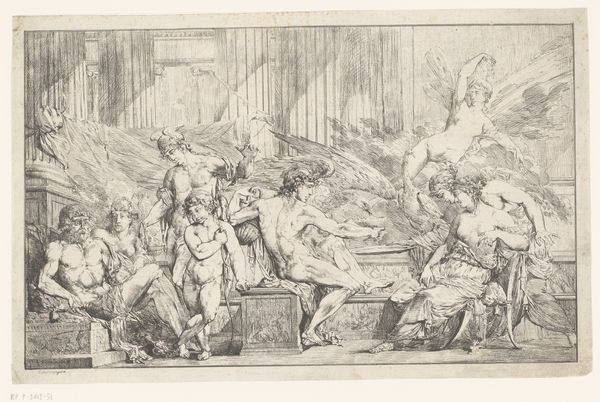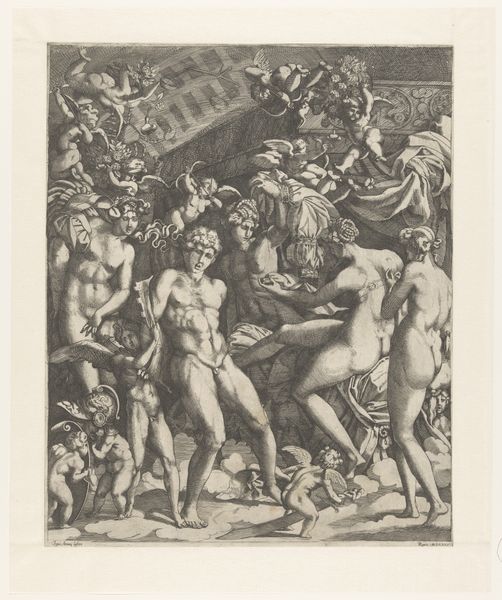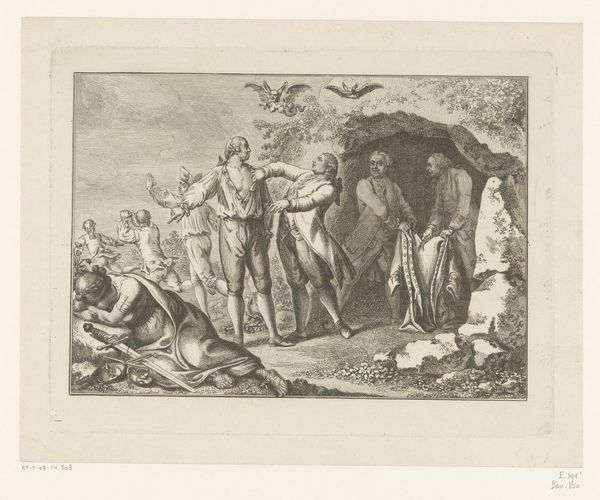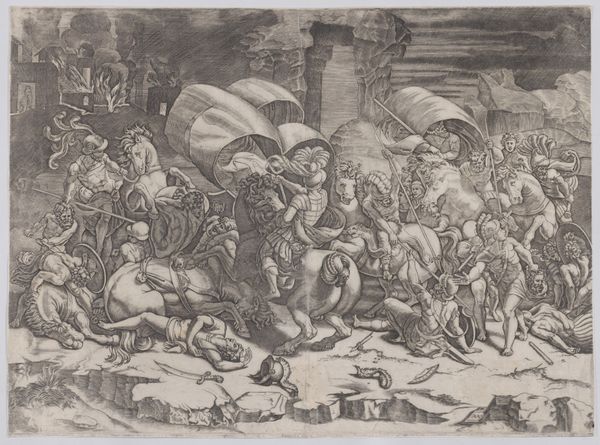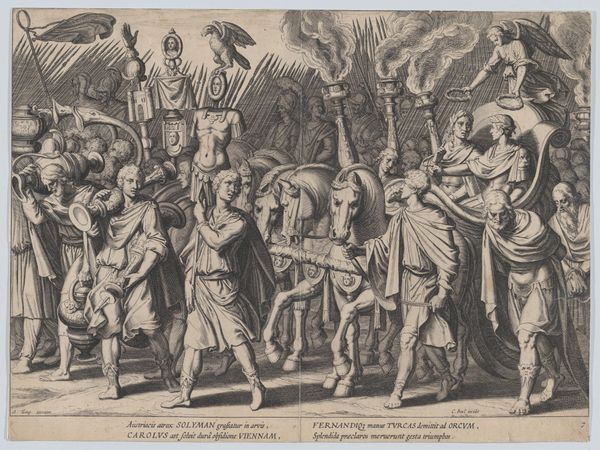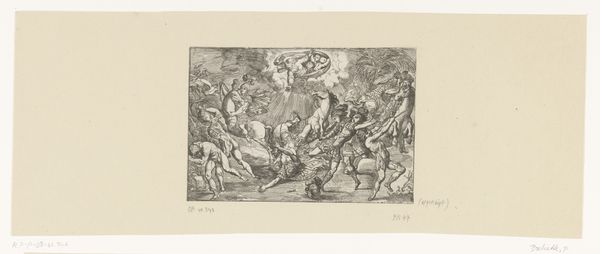
Overwinning op de onwetendheid: Koning Frans I van Valois-Angoulême opent de tempel van Jupiter 1535 - 1598
0:00
0:00
print, engraving
#
allegory
#
pen drawing
# print
#
old engraving style
#
mannerism
#
figuration
#
history-painting
#
engraving
Dimensions: height 278 mm, width 418 mm
Copyright: Rijks Museum: Open Domain
Curator: At first glance, I'm struck by the dynamic energy, the bodies in turmoil, almost a Baroque sensibility despite its earlier origins. Editor: You're right, there’s definitely a sense of movement and drama. We are looking at a print called "Overwinning op de onwetendheid: Koning Frans I van Valois-Angoulême opent de tempel van Jupiter," which translates to "Victory over Ignorance: King Francis I of Valois-Angoulême Opens the Temple of Jupiter." It was produced between 1535 and 1598 by René Boyvin. Curator: So, it's essentially propaganda. Francis I depicted as a bringer of light and reason? That's powerful imagery, but I wonder, who is René Boyvin trying to reach with this message? The figures being liberated from ignorance are all quite idealized, Roman figures, reminiscent of High Renaissance drawings. Editor: The print medium suggests a wider audience, although certainly an educated one that could grasp the complex allegory. Boyvin's style places him squarely in Mannerism, known for its stylized forms and exaggerated poses which we see on display in this work. The historical context matters too; France was experiencing significant cultural growth during Francis' reign. The work attempts to justify centralized rule and to show the triumph of Catholic reformation over common belief systems. Curator: Note the use of light and shadow, too. Francis stands illuminated at the temple door, literally embodying enlightenment. And these suffering, blinded figures at the door, represent the triumph of awareness over the unconscious, of course. Editor: Precisely. They seem to recoil and stumble, indicating the chaos that precedes knowledge. What interests me is how a ruler harnesses art to construct his own narrative, solidifying his power, and to present it for generations to come. Curator: Exactly, Boyvin captured more than just political ambition. This piece uses potent archetypes to communicate deeply about our fears and aspirations surrounding enlightenment, about being guided toward wisdom and escaping from the shadows of not knowing. Editor: A potent, complex image that merges politics and ideals, indeed. It reminds us that art serves agendas and embodies hopes, both for its time and ours.
Comments
No comments
Be the first to comment and join the conversation on the ultimate creative platform.
